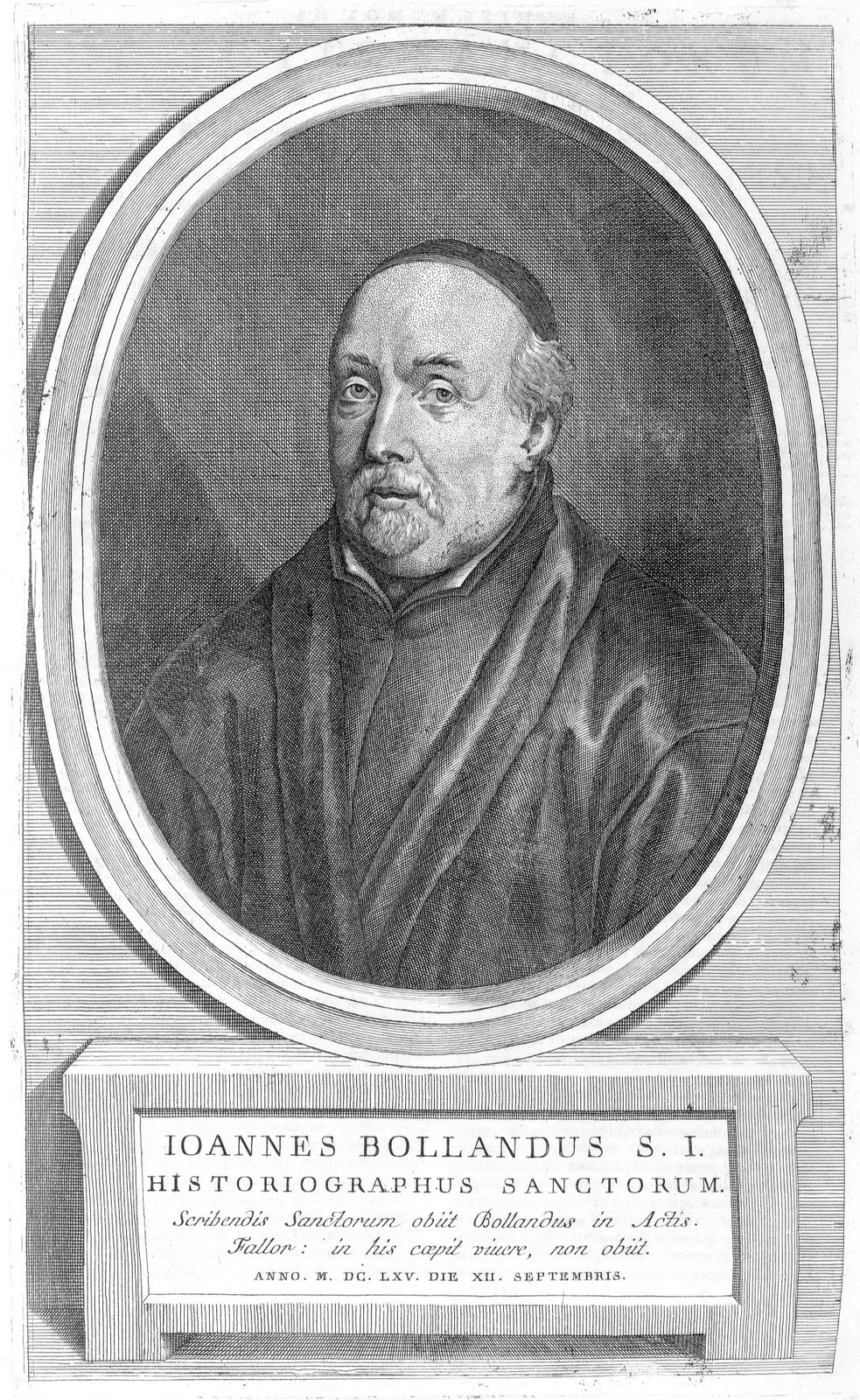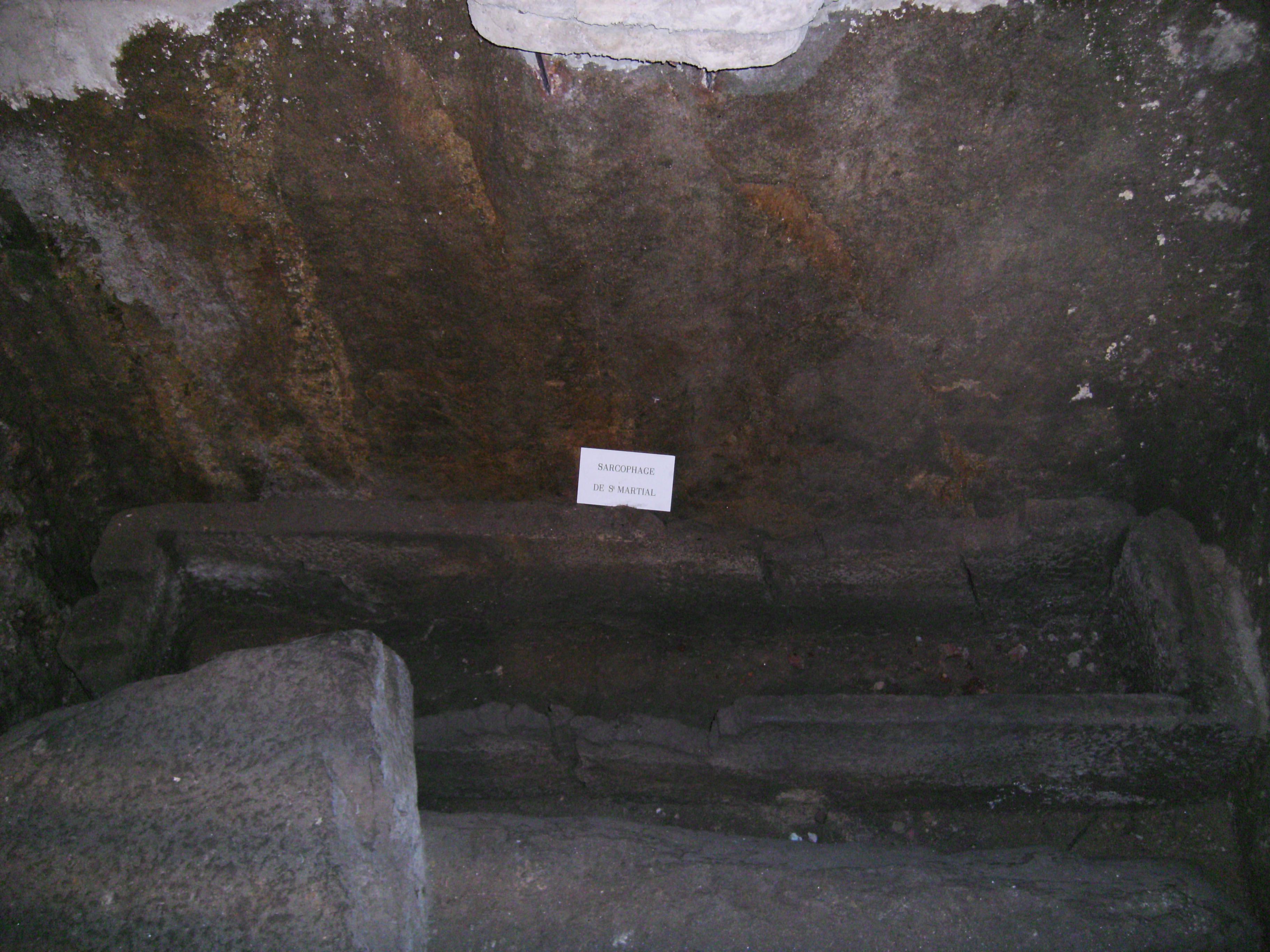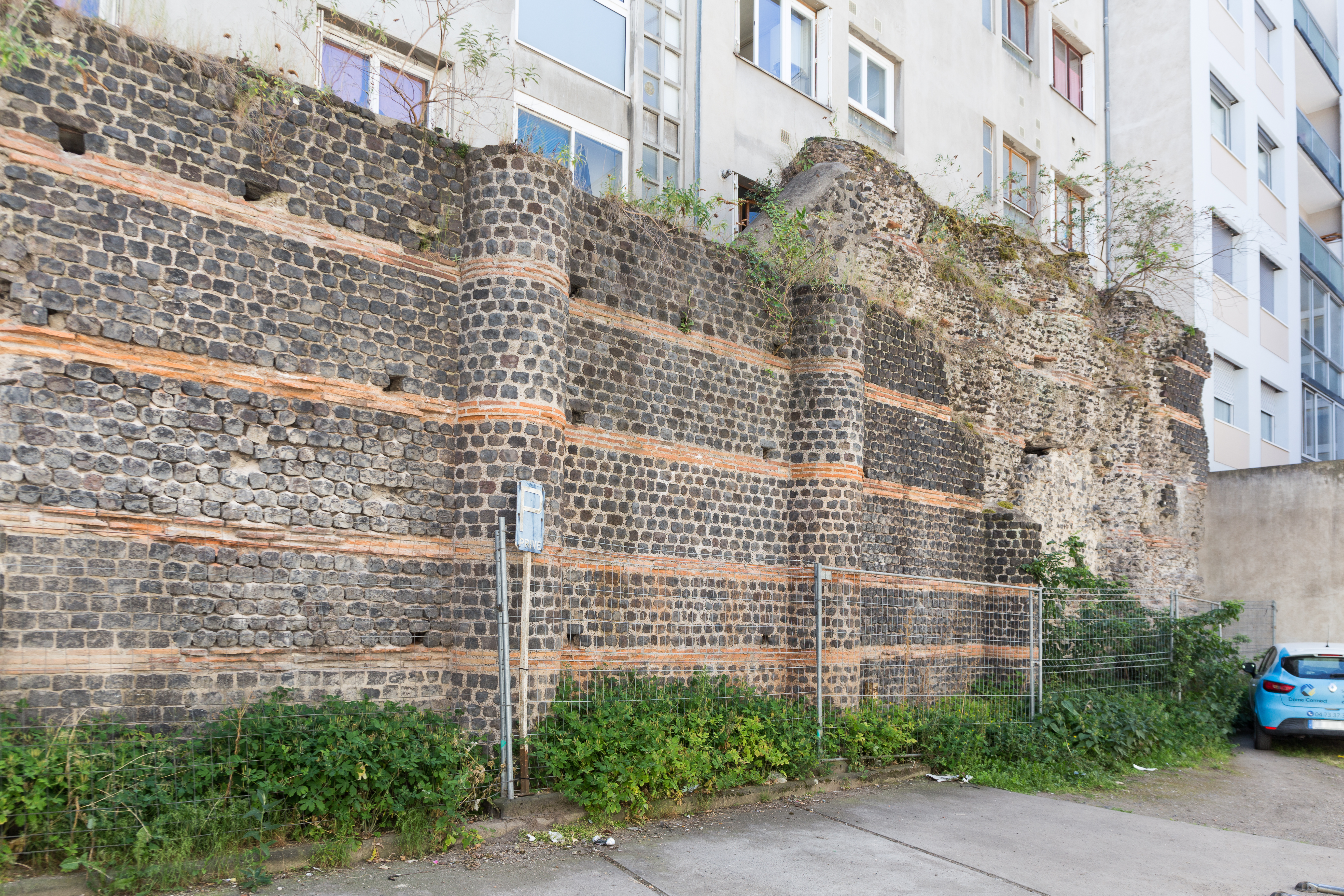|
St. Paul Of Narbonne
Paul of Narbonne (3rd century CE) was one of the "apostles to the Gauls". They had been sent out (probably by Pope Fabian, 236–250) during the consulate of Decius and Gratus (250-251 AD). Their mission was to Christianise Gaul after the persecutions under Emperor Decius had all but dissolved the small Christian communities. According to the hagiographies, Fabian sent out seven bishops from Rome to Gaul to preach the Gospel: Paul to Narbonne, Gatien to Tours, Trophimus to Arles, Saturnin to Toulouse, Denis to Paris, Austromoine to Clermont, and Martial to Limoges. Very little about Paul has survived to the present day. That he was among those priests consecrated at Rome and sent to replant the Christian communities in Gaul was affirmed by Gregory of Tours (''Historia Francorum'' I, 30), who was reading the ''acta'' of Saturnin. He and Denis had been martyred, but Paul survived to establish the church at Narbonne as its first bishop, and to die of natural causes around 250. ... [...More Info...] [...Related Items...] OR: [Wikipedia] [Google] [Baidu] |
Eastern Orthodox Church
The Eastern Orthodox Church, officially the Orthodox Catholic Church, and also called the Greek Orthodox Church or simply the Orthodox Church, is List of Christian denominations by number of members, one of the three major doctrinal and jurisdictional groups of Christianity, with approximately 230 million baptised members. It operates as a Communion (Christian), communion of autocephalous churches, each governed by its Bishop (Orthodox Church), bishops via local Holy Synod, synods. The church has no central doctrinal or governmental authority analogous to the pope of the Catholic Church. Nevertheless, the Ecumenical Patriarch of Constantinople is recognised by them as ''primus inter pares'' (), a title held by the patriarch of Rome prior to 1054. As one of the oldest surviving religious institutions in the world, the Eastern Orthodox Church has played an especially prominent role in the history and culture of Eastern Europe, Eastern and Southeastern Europe. Since 2018, the ... [...More Info...] [...Related Items...] OR: [Wikipedia] [Google] [Baidu] |
Toulouse
Toulouse (, ; ; ) is a city in southern France, the Prefectures in France, prefecture of the Haute-Garonne department and of the Occitania (administrative region), Occitania region. The city is on the banks of the Garonne, River Garonne, from the Mediterranean Sea, from the Atlantic Ocean and from Paris. It is the List of communes in France with over 20,000 inhabitants, fourth-largest city in France after Paris, Marseille and Lyon, with 511,684 inhabitants within its municipal boundaries (2022); its Functional area (France), metropolitan area has a population of 1,513,396 inhabitants (2022). Toulouse is the central city of one of the 22 Métropole, metropolitan councils of France. Between the 2014 and 2020 censuses, its metropolitan area was the third fastest growing among metropolitan areas larger than 500,000 inhabitants in France. Toulouse is the centre of the European aerospace industry, with the headquarters of Airbus, the SPOT (satellites), SPOT satellite system, ATR ( ... [...More Info...] [...Related Items...] OR: [Wikipedia] [Google] [Baidu] |
Béziers
Béziers (; ) is a city in southern France. It is a Subprefectures in France, subprefecture of the Hérault Departments of France, department in the Occitania (administrative region), Occitanie Regions of France, region. Every August Béziers hosts the famous ''Feria de Béziers'', which is centred on bullfighting. A million visitors are attracted to the five-day event. The town is located on a small Cliff, bluff above the river Orb (river), Orb, about from the Mediterranean Sea, Mediterranean coast and southwest of Montpellier. At Béziers, the Canal du Midi passes over the river Orb by means of the ''Orb Aqueduct, Pont-canal de l'Orb'', an Navigable aqueduct, aqueduct claimed to be the first of its kind. History Béziers is one of the oldest cities in France. Research published in March 2013 shows that the Greek colonisation, ancient Greek colony of Béziers dates from 575 BCE, making it older than Agde (Greek Agathe Tyche, founded in 525 BCE) and slightly younger ... [...More Info...] [...Related Items...] OR: [Wikipedia] [Google] [Baidu] |
Bollandists
The Bollandist Society (; ) is an association of scholars, philologists, and historians (originally all Jesuits, but now including non-Jesuits) who since the early seventeenth century have studied hagiography and the cult of the saints in Christianity. Their most important publication has been the ''Acta Sanctorum'' (The Acts of the Saints). They are named after the Flemish Jesuit Jean Bollandus (1596–1665). ''Acta Sanctorum'' The idea of the ''Acta Sanctorum'' was first conceived by the Dutch Jesuit Heribert Rosweyde (1569–1629), who was a lecturer at the Jesuit college of Douai. Rosweyde used his leisure time to collect information about the lives of the saints. His principal work, the 1615 ''Vitae Patrum'', became the foundation of the ''Acta Sanctorum''. Rosweyde contracted a contagious disease while ministering to a dying man, and died himself on October 5, 1629, at the age of sixty. Father Jean Bollandus was prefect of studies in the Jesuit college of Mechelen. Upon th ... [...More Info...] [...Related Items...] OR: [Wikipedia] [Google] [Baidu] |
Hyperbole
Hyperbole (; adj. hyperbolic ) is the use of exaggeration as a rhetorical device or figure of speech. In rhetoric, it is also sometimes known as auxesis (literally 'growth'). In poetry and oratory, it emphasizes, evokes strong feelings, and creates strong impressions. As a figure of speech, it is usually not meant to be taken literally. Etymology 'Hyperbole' is derived from the ''huperbolḗ'' by way of Latin. The word is composed from ''hupér'' 'above, beyond' and ''bállō'' 'throw'. Unlike most English words beginning with ''hyper-'', it is stressed on the second syllable. The first known use is in the 15th century. Usage Hyperbole is often used for emphasis or effect. In casual speech, it functions as an intensifier: saying "the bag weighed a ton" simply means that the bag was extremely heavy. The rhetorical device may be used for serious or ironic or comic effects. Understanding hyperbole and its use in context can help understand the speaker's point. Hyperbole ge ... [...More Info...] [...Related Items...] OR: [Wikipedia] [Google] [Baidu] |
Prudentius
Aurelius Prudentius Clemens () was a Roman Christian poet, born in the Roman province of Tarraconensis (now Northern Spain) in 348.H. J. Rose, ''A Handbook of Classical Literature'' (1967) p. 508 He probably died in the Iberian Peninsula some time after 405, possibly around 413. The place of his birth is uncertain, but it may have been Caesaraugusta ( Saragossa), Tarraco ( Tarragona), or Calagurris ( Calahorra). Life Prudentius practiced law with some success, and was twice provincial governor, perhaps in his native country, before the emperor Theodosius I summoned him to court. Towards the end of his life (possibly around 392) Prudentius retired from public life to become an ascetic, fasting until evening and abstaining entirely from animal food; and writing poems, hymns, and controversial works in defence of Christianity. Prudentius later collected the Christian poems written during this period and added a preface, which he himself dated 405. Poetry The poetry of Prudentius ... [...More Info...] [...Related Items...] OR: [Wikipedia] [Google] [Baidu] |
Via Domitia
The Via Domitia was the first Roman road built in Gaul, to link Italy and Hispania through Gallia Narbonensis, across what is now Southern France. The route that the Romans regularised and paved was ancient when they set out to survey it, and traces the mythic route travelled by Heracles. The construction of the road was commissioned by Gnaeus Domitius Ahenobarbus (consul 122 BC), Gnaeus Domitius Ahenobarbus, whose name it bore, following the defeat of the Allobroges and Averni by himself and Quintus Fabius Maximus Allobrogicus in 122 BCE. Domitius also established a fortified garrison at Narbo (modern Narbonne) on the coast, near Hispania, to guard construction of the road. It soon developed into a full Roman colony ''Colonia Narbo Martius''. The lands on the western part of the route, beyond the River Rhône had been under the control of the Averni who, according to Strabo, had stretched their control to Narbo and the Pyrenees. Crossing the Alps by the easiest passage, the Col ... [...More Info...] [...Related Items...] OR: [Wikipedia] [Google] [Baidu] |
Acta
Acta or ACTA may refer to: Institutions * Anti-Counterfeiting Trade Agreement, an intellectual property trade agreement * Administrative Council for Terminal Attachments, a standards organization for terminal equipment such as registered jacks * Alameda Corridor Transportation Authority, in southern California * American Council of Trustees and Alumni, an education organization * Atlantic County Transportation Authority, a transportation agency in Atlantic County, New Jersey * Australian Community Television Alliance, an industry association representing community television licensees in Australia Science and technology * Acta, the transactions (proceedings) of an academic field, a learned society, or an academic conference * Acta (software), early outliner software * Activin A, mammalian protein * ACTA1, actin alpha 1 (skeletal muscle), human protein * ACTA2, actin alpha 2 (smooth muscle), human protein * Actin assembly-inducing protein The Actin assembly-inducing protein (ActA ... [...More Info...] [...Related Items...] OR: [Wikipedia] [Google] [Baidu] |
Gregory Of Tours
Gregory of Tours (born ; 30 November – 17 November 594 AD) was a Gallo-Roman historian and Bishop of Tours during the Merovingian period and is known as the "father of French history". He was a prelate in the Merovingian kingdom, encompassing Gaul's historic region. Gregory's most notable work is the ('Ten Books of Histories'), also known as the ('History of the Franks'). is considered a primary source for the study of Merovingian history and chronicles the accounts of the Franks during the period. Gregory is also known for documenting accounts of religious figures, notably that of Martin of Tours. Biography Gregory was born in Clermont, in the Auvergne region of central Gaul. He was born into the upper stratum of Gallo-Roman society as the son of Florentius, Senator of Clermont, by his wife Armentaria II, niece of Bishop Nicetius of Lyon and granddaughter of both Florentinus, Senator of Geneva, and Saint Gregory of Langres. Relatives of Gregory held the Bishopr ... [...More Info...] [...Related Items...] OR: [Wikipedia] [Google] [Baidu] |
Limoges
Limoges ( , , ; , locally ) is a city and Communes of France, commune, and the prefecture of the Haute-Vienne Departments of France, department in west-central France. It was the administrative capital of the former Limousin region. Situated on the first western foothills of the Massif Central, Limoges is crossed by the river Vienne (river), Vienne, of which it was originally the first ford crossing point. The second most populated town in the Nouvelle-Aquitaine, New Aquitaine region after Bordeaux, a University of Limoges, university town, an administrative centre and intermediate services with all the facilities of a regional metropolis, it has an urban area of 323,789 inhabitants in 2018. The inhabitants of the city are called the Limougeauds. Founded around 10 BC under the name of Augustoritum, it became an important Gallo-Roman culture, Gallo-Roman city. During the Middle Ages Limoges became a large city, strongly marked by the cultural influence of the Abbey of Saint Mar ... [...More Info...] [...Related Items...] OR: [Wikipedia] [Google] [Baidu] |
Saint Martial
Martial of Limoges (3rd century), whose name is also rendered as Marcial, Martialis, and Marcialis, and is also called "the Apostle of the Gauls" or "the Apostle of Aquitaine," was the first bishop of Limoges. Venerated as a Christian saint, Martial of Limoges is considered to have been canonized Pre-Congregation, and his feast day is on 30 June. He appears on the Limoges coat of arms. Life There is no accurate information as to the origin, dates of birth and death, or the acts of this bishop, although he is said to have come from the "East." According to Gregory of Tours, during the time of the Emperors Decius Pope Fabian sent out seven bishops from Rome to Gaul to preach the Gospel: Gatien to Tours, Trophimus to Arles, Paul to Narbonne, Saturnin to Toulouse, Denis to Paris, Austromoine to Clermont, and Martial to Limoges. According to the Golden Legend, when Martial first went to Limoges as a missionary, he visited the temple, where the priests beat him before having ... [...More Info...] [...Related Items...] OR: [Wikipedia] [Google] [Baidu] |
Clermont-Ferrand
Clermont-Ferrand (, , ; or simply ; ) is a city and Communes of France, commune of France, in the Auvergne-Rhône-Alpes regions of France, region, with a population of 147,284 (2020). Its metropolitan area () had 504,157 inhabitants at the 2018 census.Comparateur de territoire: Aire d'attraction des villes 2020 de Clermont-Ferrand (022), Unité urbaine 2020 de Clermont-Ferrand (63701), Commune de Clermont-Ferrand (63113) INSEE It is the Prefectures in France, prefecture (capital) of the Puy-de-Dôme departments of France, département. Olivier Bianchi is its current List of mayors of Clermont-Ferrand, mayor. Clermont-Ferrand sits on the plai ... [...More Info...] [...Related Items...] OR: [Wikipedia] [Google] [Baidu] |








